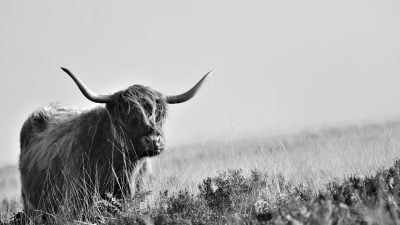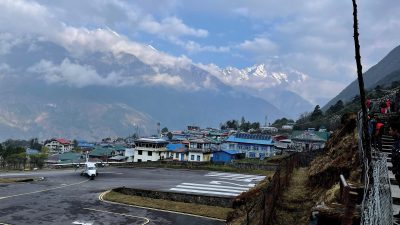Home / Australia & South Pacific / Experiencing Wildlife on an Au…
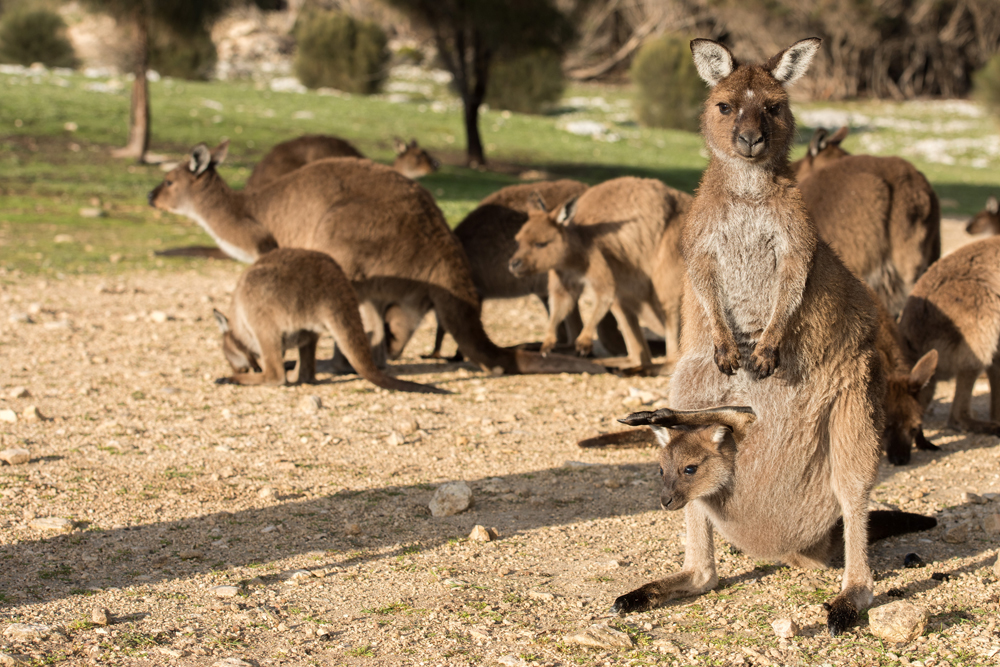
Experiencing Wildlife on an Australia Vacation
Australia has the most dangerous collection of wildlife to be found anywhere. However, don’t be put off by this. There are many other kinds of wildlife experiences to be had in this country that can safely enhance your Australia vacation.
I quote a source from the link below. “The Australian Museum in Sydney has a ranking of Australia’s most dangerous animals based on the level of threat they pose combined with how likely an unlucky punter is to encounter one in the wild. While many of the usual suspects are there, you might be surprised to find the humble honey bee features high up on the list.” Want to know more about this list, check out this article by Mashable.com.
A visit to the Australia Museum should satisfy your experience with dangerous animals, so now let’s look at the more docile but interesting types and where you can see them up close. One interesting fact is that more than 80 percent of Australia’s mammals and reptiles are unique to this country and are not to be found anywhere else. In fact, Australia has more than 378 mammal species, 828 bird species, 4000 fish species, 300 species of lizards, 140 snake species, two crocodile species and around 50 types of marine mammal. That’s a lot of wildlife. Australia’s native animals can be difficult to spot in the wild, but you can also view them in zoos and wildlife parks. Although I specify where to see individual types of wildlife, you will also usually have the opportunity, at the same time, to see many other types at the same location.
Kangaroos Galore
I am suggesting two places on an Australia vacation where you can be very close to these animals, and which I have experienced. Both are in South Australia. Kangaroo Island (a most apt name) is reached by road and ferry and is 112 kilometres/70 miles from Adelaide. or you can fly directly. The island, which is Australia’s third largest, teems with animal and bird life. It is recognized as a sanctuary for endangered species. What wildlife will you experience? At least kangaroos, koalas, wallabies, and sea lions but you will also see dolphins, platypus, echidnas (a type of spiny anteater), and goannas (monitor lizards). Birds? Definitely penguins but also pelicans, terns, curlews, plovers, rock parrots, cormorants, oystercatchers, and many other species too numerous to list here. It also offers spectacular scenery including rugged coastal cliffs, natural bushland, pristine beaches, and vineyards. If you decide to spend time here, there is plenty of accommodation available ranging from guest houses to luxury lodges.
Cleland Conservation Park is a protected area located in the Adelaide Hills 22 kilometres/14miles from Adelaide. There are very few animal enclosures at Cleland. Most animals live in a natural habitat and you can get up close for great photos. The animals are accustomed to people so you can pat and feed them. A bag of food pellets bought here enabled me to have kangaroos constantly follow me around. That was until someone else enticed them away. There are a number of other marsupials here such as koalas, wallabies, wombats, dingoes, and Tasmanian devils. The latter are enclosed as they can be dangerous. They reminded me of large groundhogs.
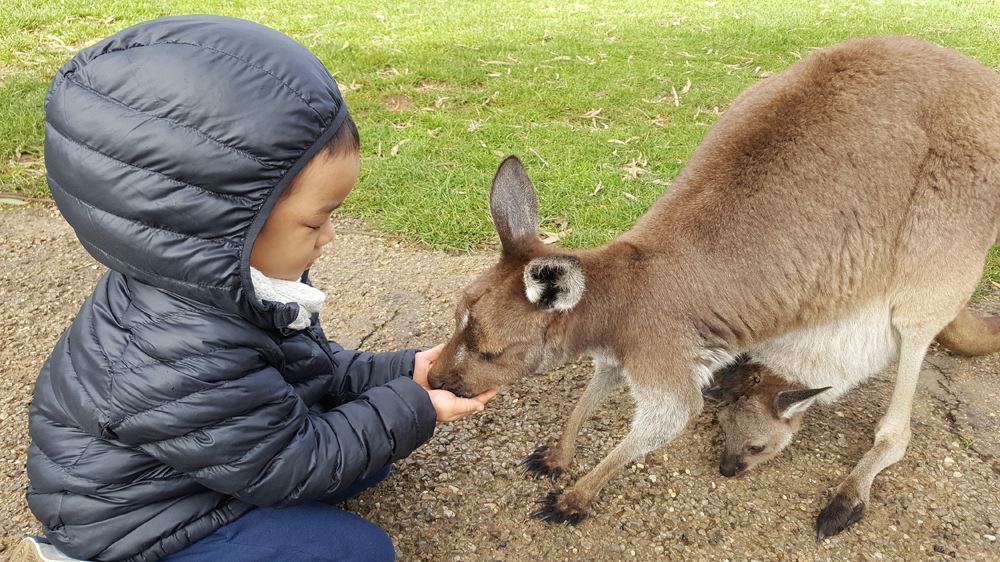
Kuddly Koalas
Lone Pine Sanctuary near Brisbane, the world’s oldest and largest koala sanctuary, is an excellent place, on an Australia vacation, to not only see koalas but also to have your photograph taken holding one (for a small fee). They are placid by nature and don’t seem to mind being held. Koalas are a protected species as, a long time ago, they were hunted for their fur. Here, there are around 130 koalas, many of them born in the sanctuary. Koalas are not the only wildlife here. You can also see kangaroos, Tasmanian devils, wombats, platypus, and various species of reptiles.
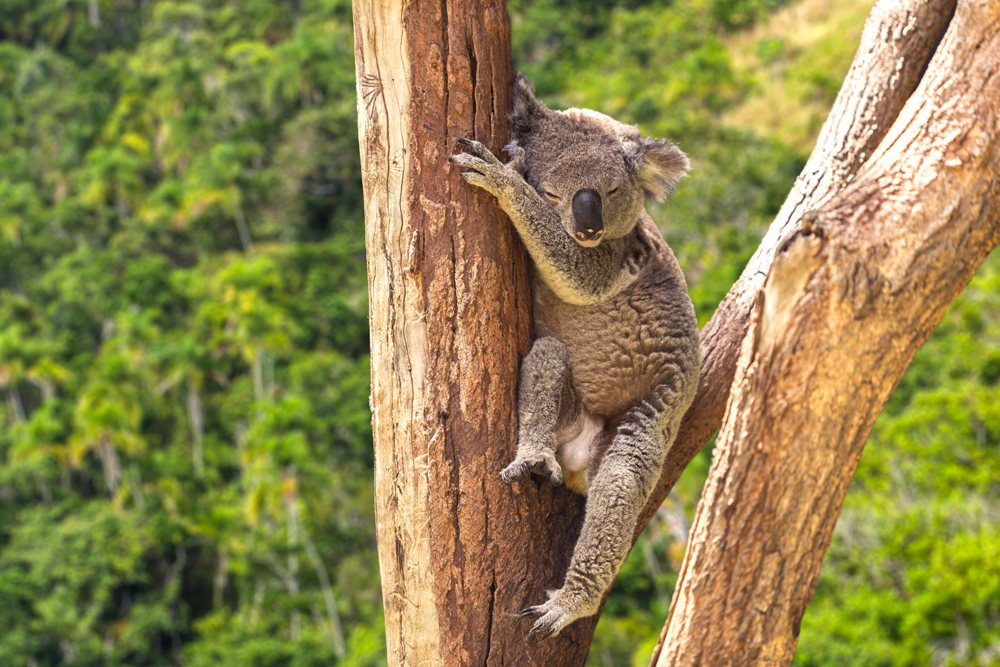
Featherdale Wildlife Park is just outside Sydney and specializes in Australian native wildlife and birds as well as reptiles and marsupials. Here, you can not only have a personal encounter with a koala but also feed the kangaroos and wallabies. Again, for a fee, you can hold a koala and have your photo taken.
Those Penguins Don’t Fly!
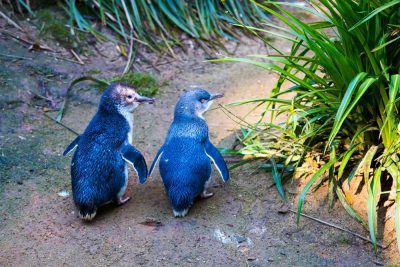
The Penguin is not unique to Australia and can be found all over the globe. Technically penguins cannot fly even though they have wings. These wings, however, enable them to swim, sometimes at speeds up to 40 kilometres/25 miles per hour. If you find yourself in Melbourne, you can see fairy penguins at Phillip Island, just outside of the city. You gather on the beach at dusk and watch the penguins, 12 inches tall, emerge from the sea after spending most of the day catching fish to feed their young who are living in nests along the shoreline. One comes out to announce their arrival, then two or three more, and then hoards of them waddle up the beach. It’s quite a sight.
Another place to experience penguins on a trip to Australia is at Sea World on the Gold Coast of Queensland. Here you can see the King Penguin. Their home is an icy room which replicates their natural habitat and includes snow. They are most active at feeding time and there is a special program which lasts 45 minutes allowing approximately 20 minutes on the ice with the penguins.
Near Perth, in Western Australia, is the aptly named Penguin Island, home to the largest population of Little Penguins who visit the island annually to breed and nest. Visits to this untouched island are strictly limited and are only during specific daylight hours from mid-September to early June. The island is blessed with white sandy beaches and is surrounded by crystal clear waters. There are penguin feedings three times a day. Apart from the penguins, you can see pelicans, sea eagles, albatross, and a number of other native bird species.
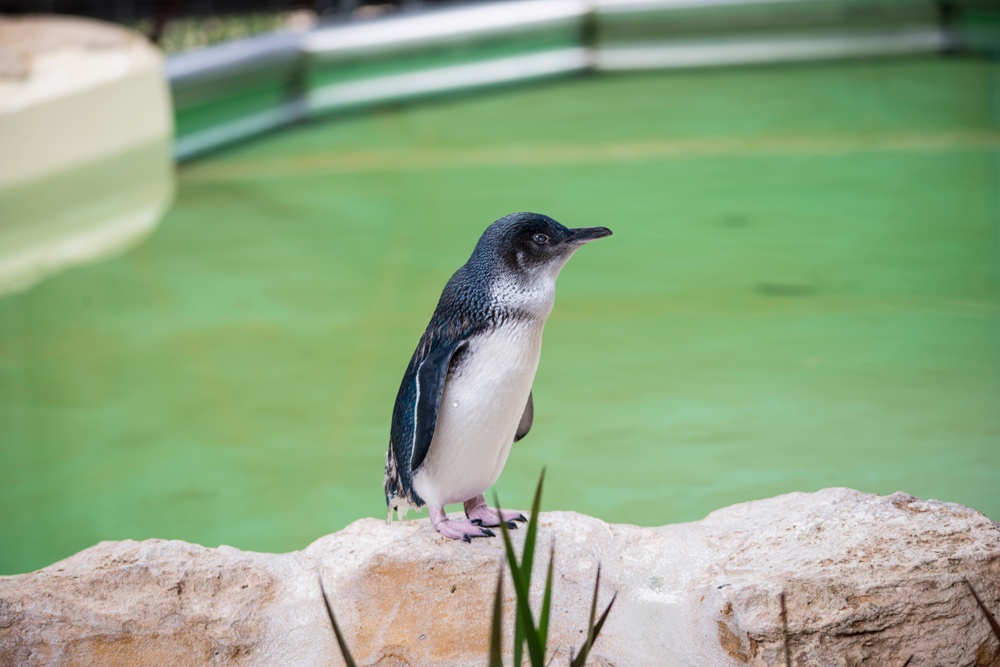
Devilish Tasmanian Devils
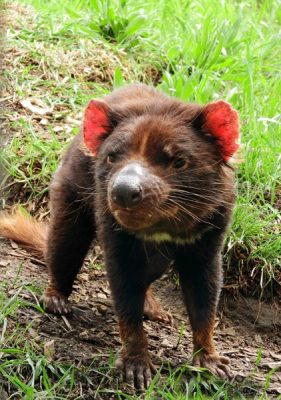
The Tasmanian devil is a carnivorous marsupial and is now found in the wild only in Tasmania. It is the size of a small dog, stocky and muscular, and has a loud and disturbing screech. It is considered an endangered species. So, where better to see them than in Tasmania, although there are many wildlife parks elsewhere in Australia where they exist. Close to Hobart, the capital of Tasmania, are two locations. There is the Tasmanian Devil Unzoo near Port Arthur, about 100 kilometres/62 miles away. It is called an unzoo because there are no boundary fences. All the wildlife, which includes Tasmanian devils and wallabies, are free to wander. The Tasmanian devils here are the last wild devils that have been saved from a facial disease which inflicted many of these Australian species. You can take a guided nature walk and see the devils enjoying a meal or stroll along the bush trails on your own. The Bonorong Wildlife Sanctuary near Hobart has been running a Tasmanian devil breeding program for more than 20 years. Here you can have a tour and also feed the devils.
Related Article:
Have a “Devilish” Good Time with the Outsiders of the Tasman Peninsula, on Your Australia Vacation
Go Crocodile Spotting
I know I started off with soft and cuddly animals for the most part. Well, if you undertake to see crocodiles, who are not either, go see them in Kakadu National Park in the Northern Territory. This park has around 100,000 of them. Crocodiles are the biggest reptile in the world. The best time to see them is during the dry season (August to November). You can take a cruise along the East Alligator River where some saltwater crocodiles, the biggest at 6 metres/20 feet in length and most dangerous, exist. You can also take a night cruise and watch for the crocodiles watching you!
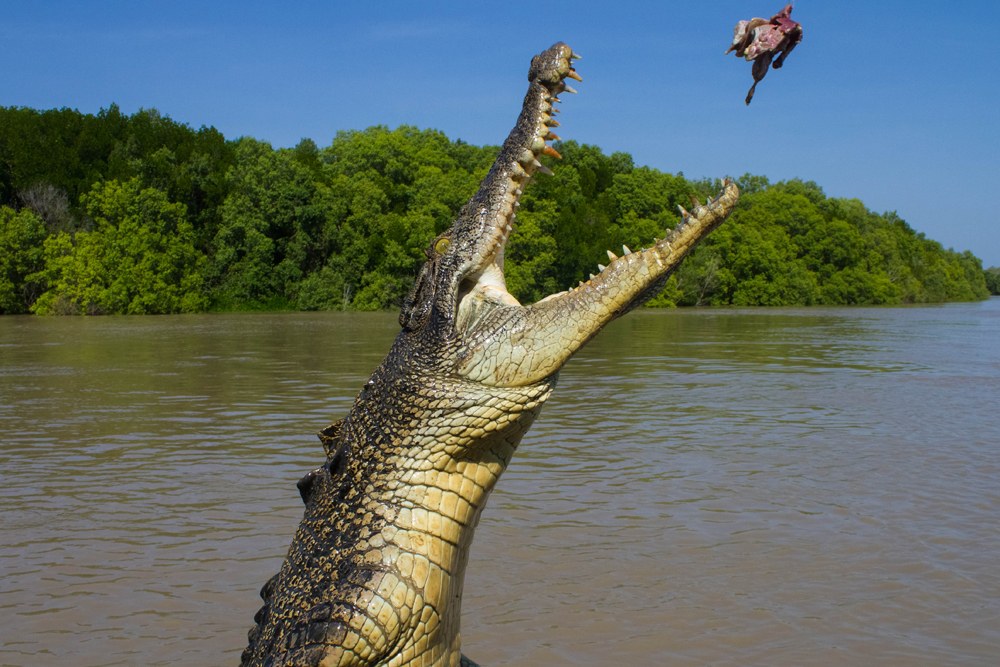
Swim with Friendly Dolphins
Port Stephens is around 180 kilometres/112 miles north of Sydney. It is regarded as Australia’s dolphin capital. Here you can have a tour on an Australia vacation which includes swimming with these creatures. You are attached to a harness and clipped to a tow rope between the twin bows of a catamaran. As the dolphins move playfully through the water, you effectively swim in time with them. Another place is Port Phillip Bay, near Melbourne. Here, once you enter the water, the dolphins, as well as fur seals, will swim around you. The dolphin season lasts from the end of September to the end of April. One more location is Glenelg, a pleasant beachside suburb of Adelaide. Here you take a boat out to sea and, with a wetsuit and snorkeling equipment, once in the water, are joined by dolphins swimming around and beneath you.
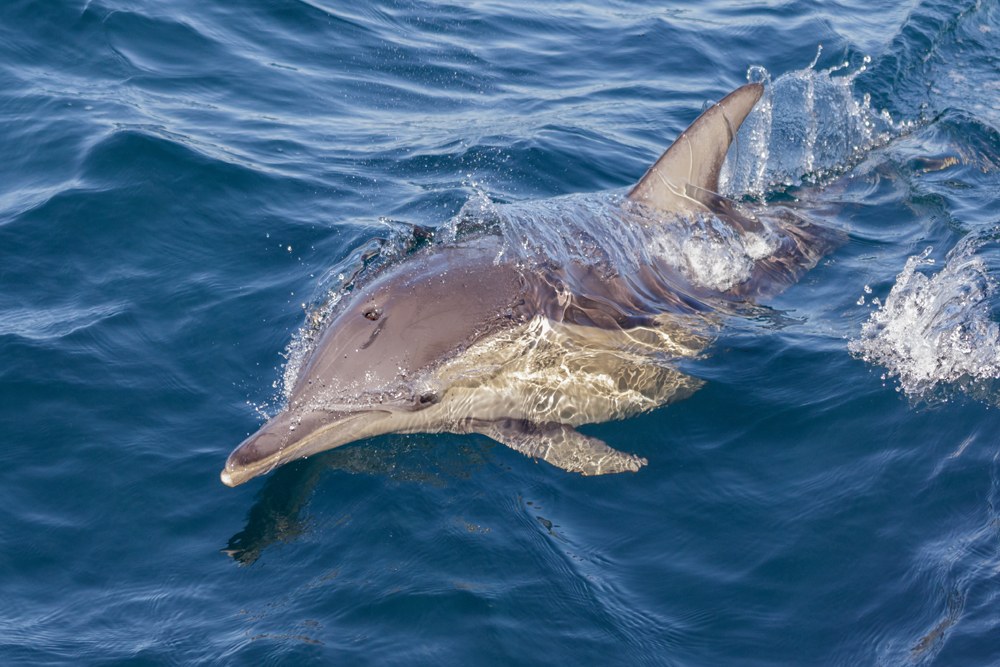
Have a Whale of a Time
Australia is one of the best places in the world to see whales. There are more than 45 different species of whales, dolphins, and porpoises that call Australia home. Actually, 60 per cent of the world’s whales can be found in Australia’s waters. The most common whales are southern rights and humpbacks which migrate annually up both the west and east coasts of Australia from Antarctica in order to breed and mate. Two places in Queensland to consider are Hervey Bay where humpback whales stop on their way back to colder waters from mid-July to late November and the Whitsundays group of islands (part of the Great Barrier Reef) from May to September where humpback whales nurture their young. Hamilton Island is one of the best Whitsunday destinations.
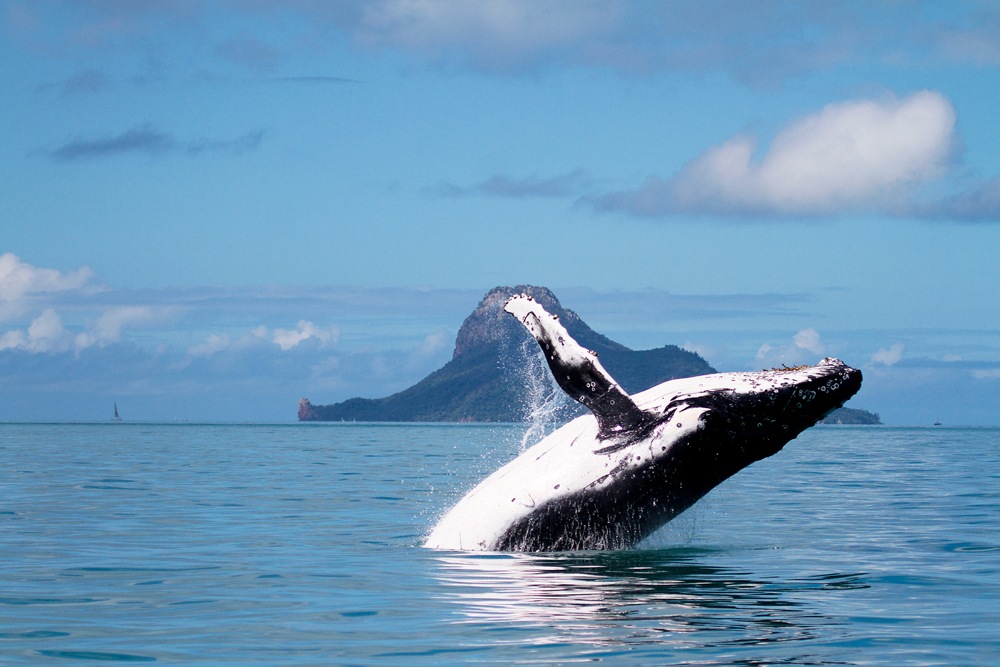
Swimming with Whale Sharks
There is one place on an Australia vacation where there is not only an abundance of sharks but also where you can both view them or swim with them. This is at Ningaloo Marine Park in Western Australia, a UNESCO World Heritage Site. It consists of a coral reef which is 260 metres/162 miles long and very close to shore. Not only can you view whale sharks but also turtles, tropical fish, manta rays, and humpback whales. There is nowhere else in the world where you can find so many whale sharks. They visit the reef annually between March and August. Tours leave from Exmouth and Coral Bay daily either by boat or microlight aircraft to view the sharks. Should you elect to travel by boat, you have the opportunity to swim with them. Whale sharks are slow-moving, docile creatures, huge but completely harmless. They spend the majority of their time on the surface of the water. Therefore, all you need to be is a competent swimmer to enjoy this exceptional experience.

Birds Worth Watching
In Australia, birds are everywhere so this means that wherever you are on your Australia vacation, you will probably find a designated spot which will allow you to enjoy bird watching. If you are an avid birdwatcher, I suggest getting hold of a copy of the Australian Bird Guide, a very comprehensive book listing over 900 bird species to be found in this country. Here are three places which are exceptional for bird watching. Kakadu National Park in the Northern Territory, because of its floodplains, is filled with waterbirds. There are 280 different species of all types of birds. The best time to view them is the dry season from June to October. The Daintree National Park in Queensland, 100 kilometres/62 miles north-west of Cairns, offers 430 different species of birds. It is a tropical forest in the very north of the state with perfect wet conditions in its dense forests to attract birds. The best way to view is to take an early morning cruise along the Daintree River. Another excellent location is the Atherton Tablelands just west of Cairns and home to some of the most beautiful birds in the country. Again, there are dense rainforests plus volcanic crater lakes. A good place to start is at Kuranda Bird World, which offers tours to view 60 different species of tropical birds. Apart from the birds, the Atherton Tablelands has an abundance of wildlife including tree kangaroos, platypus, and rock wallabies. Throughout the park, there are venues which offer guided night tours to spot birds.
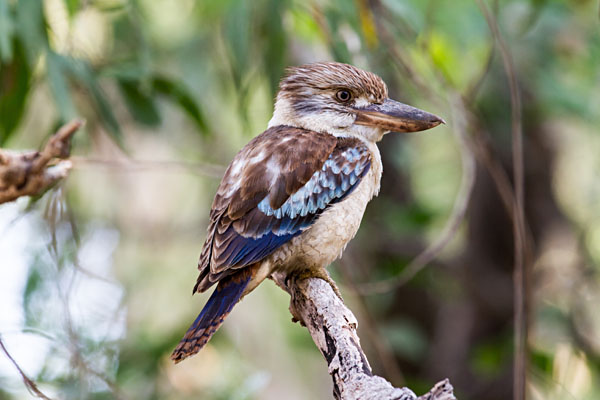
All of the above hardly makes a dent in the availability of places to find outstanding wildlife on an Australia vacation, but hopefully, it’s a start.
Get more travel inspiration by email.
Subscribe
0 Comments

Get the latest travel trends & hear about the best deals on vacations around the world.
If you’re a Globetrotter, these are the newsletters for you!
